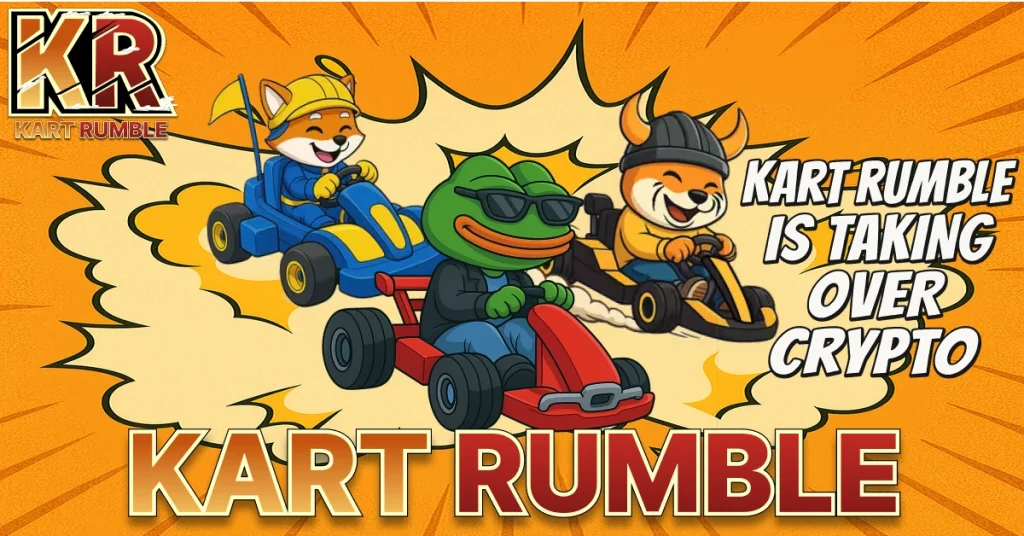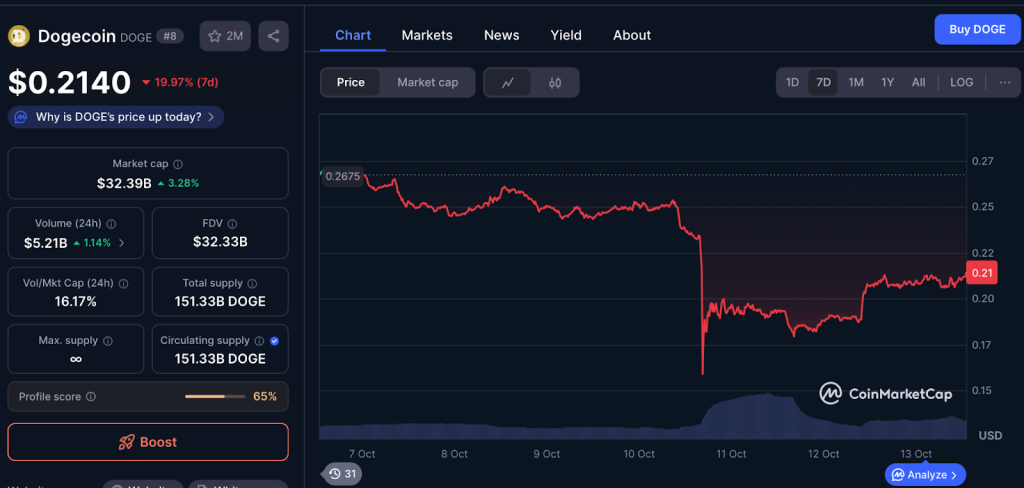Best Altcoins to Buy Now? Kart Rumble Might Be the Next PEPE or Dogecoin

The post Best Altcoins to Buy Now? Kart Rumble Might Be the Next PEPE or Dogecoin appeared first on Coinpedia Fintech News
For those looking for the best altcoins to buy now, Kart Rumble ($RBT) is at the top of the list, offering a mix of memes, gaming, and utility.
Established coins like Pepe and Dogecoin have already seen their explosive price increases, and are highly unlikely to attain a 10x once again. Kart Rumble, in contrast, is just getting started and might win the race to the elusive $1.0, sought out by both Pepe and Dogecoin.
Introducing Kart Rumble
Kart Rumble is taking a novel approach that incorporates meme culture (including Pepe and Dogecoin), interactive gameplay, and cutting-edge AI. There are multiple USPs that set Kart Rumble apart from other presales.
One distinguishing characteristic is that it avoids play-to-earn extraction dynamics. This is where users play a game solely for what they can extract from the ecosystem in terms of rewards. It’s a parasitical approach that takes away from the quality of gameplay. Kart Rumble, in contrast, places a firm emphasis on gameplay, with adaptive AI that changes the difficulty each time.
Another selling point of Kart Rumble is that it avoids PoS staking APY. Many presales offer huge APY yields to investors in the hopes of enticing them. The result is a huge APY for a coin that tanks and goes to zero. This is extremely misleading. However, the people looking to earn gigantic APY without contributing anything could also be blamed for having a get-rich-quick attitude that facilitates fraudulent behavior.
Kart Rumble deploys staking only in terms of its governance model, which could evolve to become a fully fledged DAO in the near future. In this instance, the community will run the ecosystem, with a dynamic AI that automatically learns from players.
AI-Driven Intelligence
Kart Rumble is placing a huge emphasis on its proprietary AI model, where computer opponents adapt and change with each race. This ensures that the game is not too easy or too difficult to play. It prevents players from memorizing the map and dominating the game too easily. Every game will feel fresh as opposed to routine.
The AI is to be released in two distinct phases. The first phase includes behavior trees for opponent variety, context-aware decision-making, difficulty scaling based on player performance, and AI personas. Phase two involves reinforcement learning models, player-created content integration, and event based AI behavior. This will be developed in line with the broader four phase roadmap.
>>BUY $RBT TOKENS<<
The underlying engine for the ecosystem is Polygon. This was chosen for its fees, speed, and security features, which will be important at peak gaming times and for NFT trading. As the game gains in popularity, the intention is to migrate to a dedicated Polygon sidechain. This means there will be a dedicated chain – on the broader Polygon network – dedicated specifically to Kart Rumble. This further assists with secure asset ownership, easy upgrades, and scalability.
Pricing Mechanics And Presale Tokenomics
Kart Rumble is priced at $0.003, and will rise to $0.0035 in the next presales stage alone. At the current trajectory, stage one investors will see a 9x increase by stage twenty. Those who invest at the final stage will see a 2x return at launch. It offers a 20% early bird discount as well as the potential to earn 50% USDT commission via its affiliate program. These are major investment incentives.

There is a total of 2 billion $RBT, with 1.2 billion made available to the public in the newly launched presale. Detailed vesting schedules ensure that there is no quick profit taking, a move that ensures long term price stability. The token supply is fixed, ensuring there is no inflation in the Kart Rumble economy.
Another strong benefit of presales is that the prices are unaffected by wider market dynamics. The price is fixed until the token enters the market via DEX or CEX listing. So owning presale coins is a form of diversification against wider market phenomenon.
Why Kart Rumble Might Race Past Doge and Pepe
There are various reasons why Kart Rumble is the best altcoins to buy now, as compared to Doge or Pepe. Both of these established price coins have observed huge growth multipliers of 100x or more. This means that they simply can’t sustain much more growth. At some stage, the limit has to be reached. Fundamentals, to the extent they exist, are already priced into both coins.

Kart Rumble, as a presale, offers huge growth potential. Early investment in winning projects yields the most ROI, by far. At $0.003, Kart Rumble could explode in value. If it gains a fraction of the follower base of Doge or Pepe, it could 100x to $0.30. This is the resistance level hit by Doge on multiple occasions. Presently, it trades around $0.21.
Both Doge and Pepe are down more than 20% on a weekly basis, after the weekend’s crypto bloodbath that wiped millions off the market. The price of $RBT is still $0.03, and will still increase in the next round to $0.0035.
Of course, aside from pricing and presale mechanics. Kart Rumble is building a long term community and a game that incorporates the best of AI. The quality of its gameplay, devoid of play-to-earn extraction mechanics, will ensure it delivers value to coin holders and contributes to long term price appreciation.
Kart Rumble’s Roadmap for Growth
Kart Rumble has a clear and simple roadmap that is focused on steady growth. The team is not trying to rush everything at once. Instead, they are rolling out features in different phases to make sure the game stays fun and stable over time. If the map rolls out as expected, it might pave the way for huge growth.
The first stage is all about building the core of the game and growing the community. This includes finishing core gameplay, opening the website, launching the affiliate program, and running the presale. The second stage brings new tracks, meme characters, and the first release of the Rumble AI.
Later stages will focus on growing globally, listing the token on major exchanges, and upgrading the AI. There are also plans to migrate to a Polygon sidechain to handle more players and improve security. This detailed plan demonstrates that Kart Rumble is focused on real development over short term gains.
Kart Rumble: One of the Best Altcoins To Buy Now?
Kart Rumble has a lot going for it. Unlike many presales that promise big returns without any product, it’s building a real game with AI features, meme branding, and a clear growth plan. The fixed pricing structure gives early buyers a strong advantage, while its roadmap supports long-term success.
With Dogecoin and Pepe already near their growth limits, Kart Rumble could be the next major meme coin to gain attention. A mix of smart tokenomics, real gameplay, and strong community building makes it stand out as one of the best altcoins to buy now. Early investors might find themselves well-positioned when the token finally hits the market.
Learn more about $RBT here:
Visit the Kart Rumble Presale | Join the Telegram Community
You May Also Like

Thailand's Finance Minister: Regulatory oversight of cryptocurrencies, gold, foreign exchange, and cash transactions will be strengthened.

While the global market is rising, cryptocurrencies are falling. What exactly is the problem?
